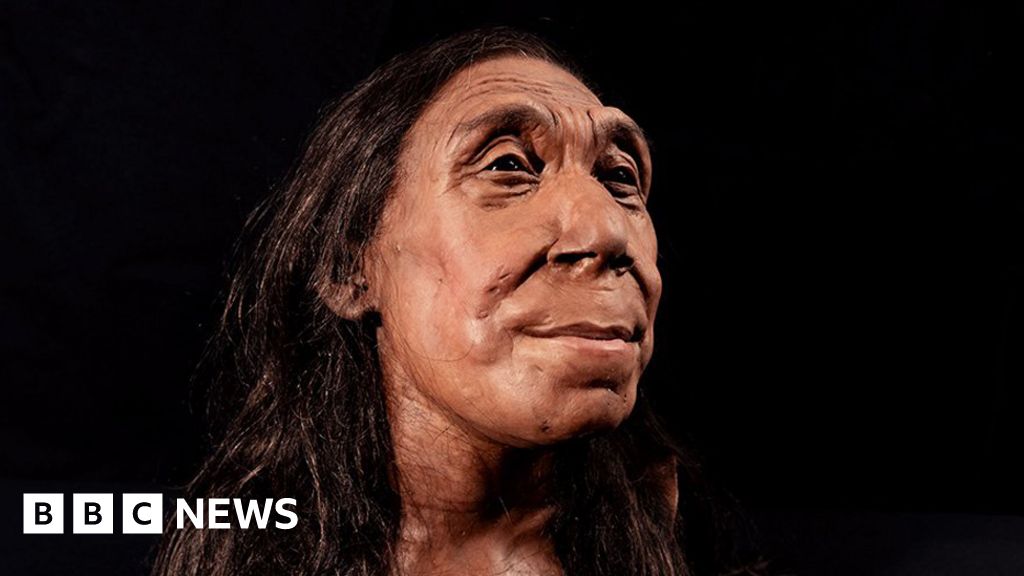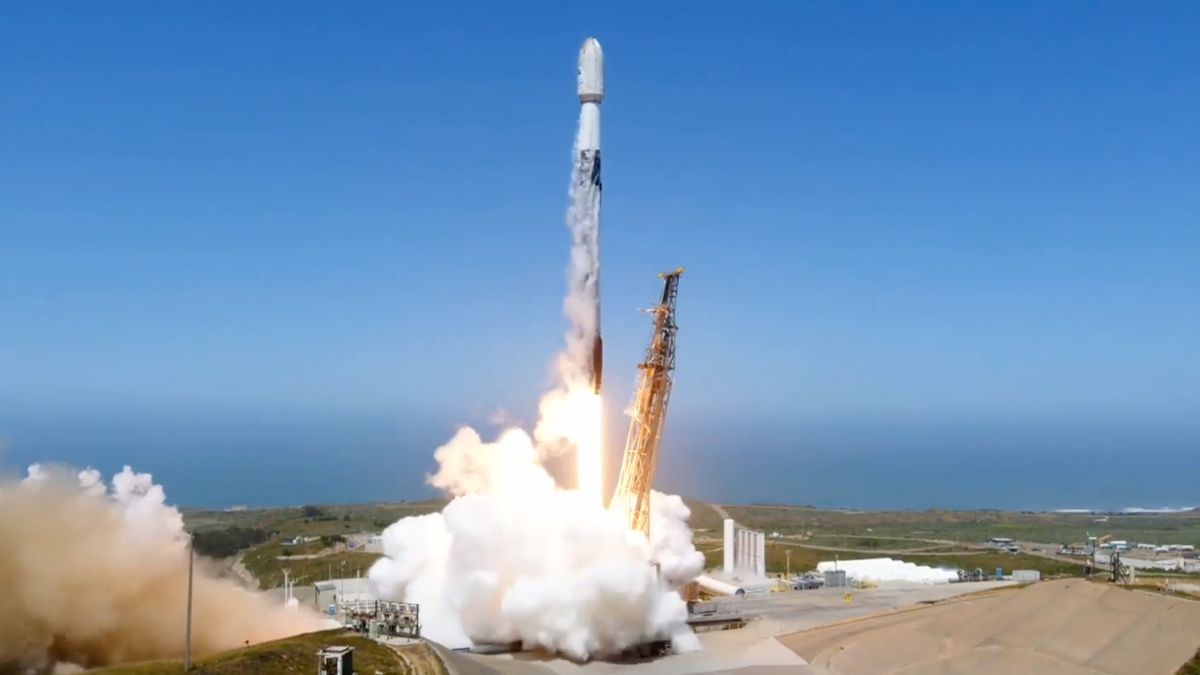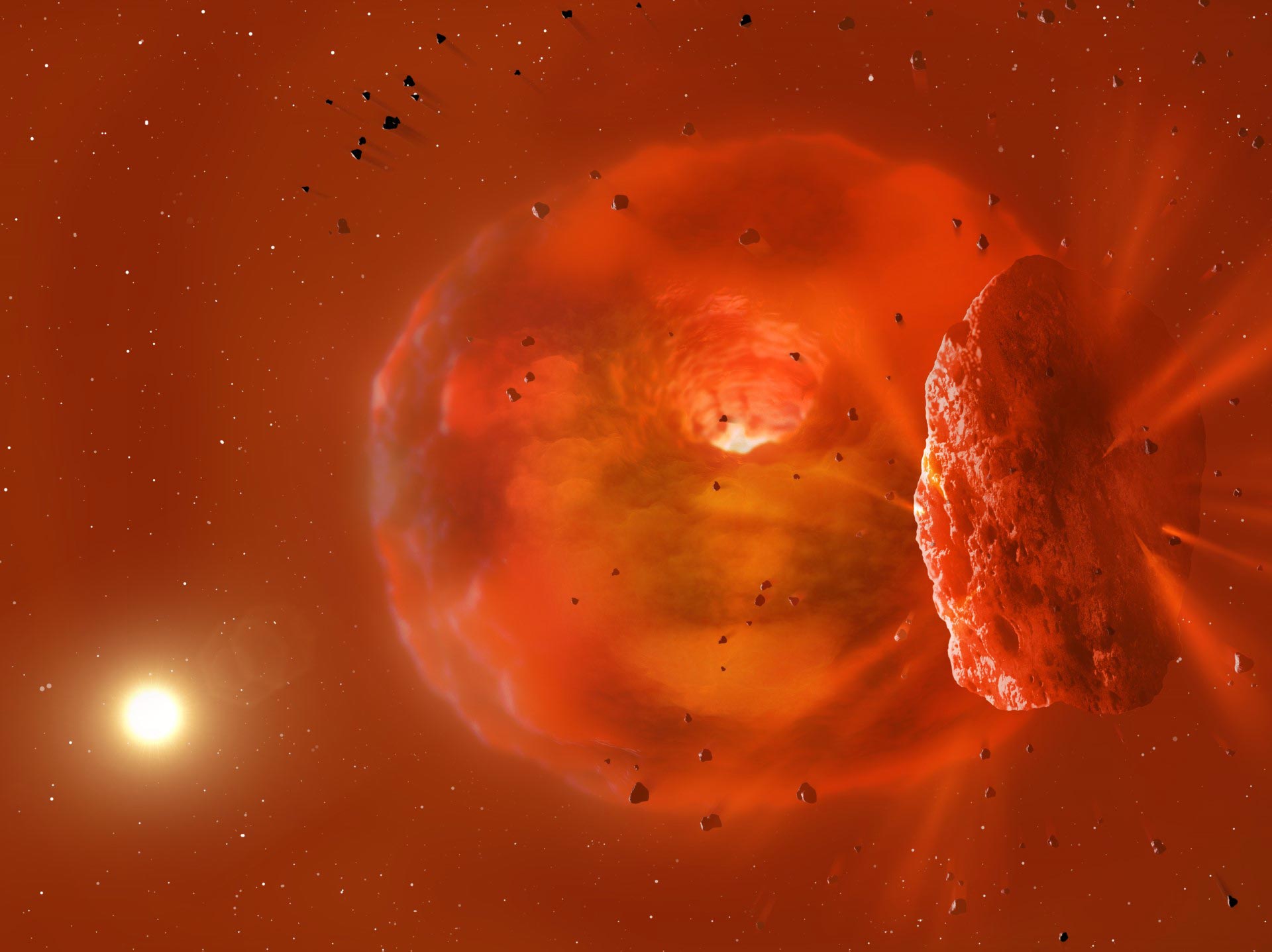The image shows a visualization of a massive, glowing planetary object resulting from a planetary collision. In the foreground, fragments of ice and rock are blown away from the impact and will later pass between Earth and the host star seen in the background of the image. Credit: Mark Garlick
Researchers observed two giant exoplanets colliding around a sun-like star, causing an intense explosion of light and dust. This discovery, made by an international team of astronomers, could lead to the formation of new moons around a newly formed planet in the future.
The study was published today (October 11) in nature, Reports indicate that two icy giant exoplanets have been seen colliding around a sun-like star, resulting in a flare of light and plumes of dust. His findings show the bright thermal afterglow and resulting dust cloud, which moved in front of the parent star, dimming it over time.
Collaborative monitoring effort
The international team of astronomers was formed after an enthusiast watched the light curve of the star and noticed something strange. The system showed its brightness doubling at infrared wavelengths about three years before the star began to fade in visible light.
Co-lead author Dr Matthew Kenworthy, from Leiden University, said: “To be honest, this observation came as a complete surprise to me. When we originally shared the visible light curve of this star with other astronomers, we started observing it using a network of other telescopes.
An astronomer pointed out on social media that the star shone in infrared rays over a period of a thousand days before visual fading. I realized then that this was an unusual event.
Simulation of a collision between two icy giants. Simulated particles (top) and density (bottom) are shown in a slice through the middle plane of the impact. The scale bar expands during the simulation to track the expanding object and debris after the collision. credit: University of Bristol
Observing and interpreting the stars
A network of professional and amateur astronomers has intensively studied the star, including monitoring changes in the star’s brightness over the next two years. The star ASASSN-21qj is named after the network of telescopes that first detected the star’s fading at visible wavelengths.
The researchers concluded that the most likely explanation is that two icy giant exoplanets collided, producing the infrared glow detected by NASAThe NEOWISE mission, which uses a space telescope to search for asteroids and comets.
Insights from the participating principal investigators
Co-author Dr Simon Locke, Research Fellow in Earth Sciences at the University of Bristol, said: “Our calculations and computer models indicate the temperature and volume of the glowing material, as well as the amount of time the glow lasted. It corresponds to the collision of two icy giant exoplanets.
The expanding debris cloud resulting from the collision then moved in front of the star about three years later, causing the star’s brightness to dim at visible wavelengths.
Future observations and predictions
Over the next few years, the dust cloud is expected to begin spreading along the orbit of the impact remnant, and light scattering from this cloud can be detected using both ground-based telescopes and NASA’s largest telescope in space. Known as JWST.
Astronomers plan to closely monitor what happens next in this system.
Co-author Dr Zoe Lenhardt, Associate Professor in Astrophysics at the University of Bristol, added: “It would be great to observe further developments. Eventually, the mass of material around the remains may condense to form a retinue of moons that will orbit this new planet.
Reference: “The afterglow of a planetary collision and the transit of the resulting debris cloud” by Matthew Kenworthy, Simon Locke, Grant Kennedy, Richelle van Capeleeven, Eric Mamajek, Ludmila Carone, Franz Josef Hambach, Joseph Masiero, Amy Mainzer, J. Davey Kirkpatrick. , Edouard Gomes, Zoe Lienhardt, Jingyao Du, Pavan Tanna, Arto Saigno, Hamish Parker, Stephane Charbonnel, Olivier Garde, Pascal Le Du, Lionel Mulatto, Thomas Petit and Michael Rizzo-Smith, October 11, 2023, nature.
doi: 10.1038/s41586-023-06573-9

“Typical beer advocate. Future teen idol. Unapologetic tv practitioner. Music trailblazer.”





More Stories
A SpaceX Falcon 9 rocket launches two satellites on a record 20th flight
On Thursday night, SpaceX is targeting a 2024 launch of its 33rd Cape rocket
Watch SpaceX Crew-8 astronauts move their Dragon onto the International Space Station on May 2